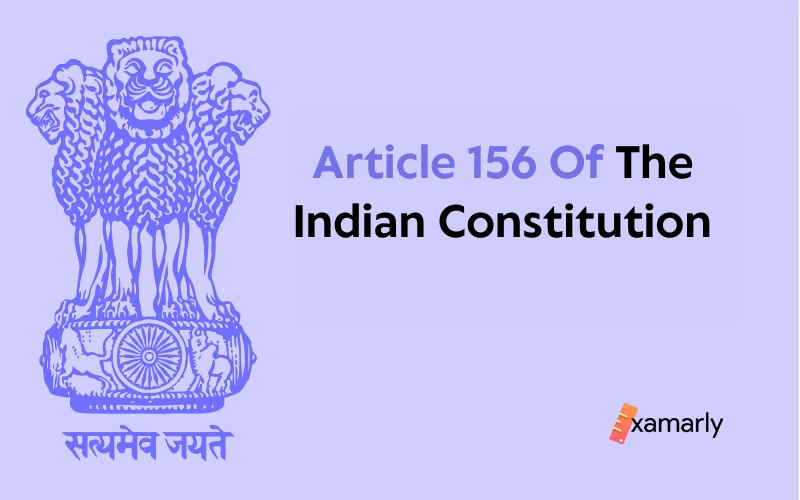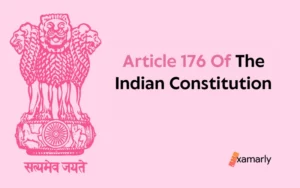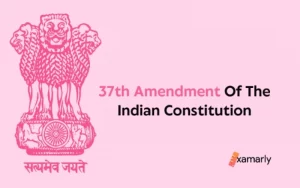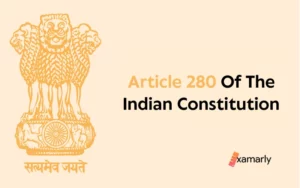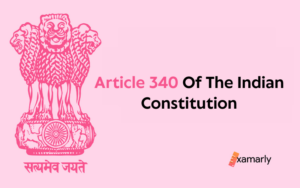The state executive is outlined in detail in Part VI of the Indian Constitution.
The advocate-general of the state, the chief minister, the council of ministers, and the governor are the members of the state executive.
Article 156 of the Indian Constitution articulates the number of years a Governor of any State can hold an office to execute his responsibilities.
Article 156 Of The Indian Constitution
The constitutional provisions of Article 156 are as follows:
- The term of office for the Governor is at the pleasure of the President.
- The Governor can resign from his position by writing a letter under his hand to the President of India.
- A Governor’s tenure in office, subject to the preceding provisions of this article, shall be for a period of five years beginning on the day he or she assumes office:
With the caveat that a governor must hold onto his position until his replacement assumes office, even after his tenure has ended.
Note: If a Governor is able to maintain the “pleasure of the President” throughout their time in office, they have the potential to serve for a full five-year term. In practice, the Governors are appointed and dismissed by the central government because Article 74 of the Constitution requires the President to act on the assistance and counsel of the Council of Ministers.
Explanation
Notwithstanding the expiration of the term: “Notwithstanding the expiry of his tenure,” the Governor shall remain in office. These phrases have the effect of excluding any discussion of whether a governor may continue to hold office after his term has ended.
Article 153 of the Constitution mandates that there be a Governor at all times, and the proviso prevents an interregnum from occurring. Of course, it is reasonable to anticipate that a new Governor will be named in due course. However, unforeseen events can occur that would prevent a successor from being named and cause the holder to serve out his five-year term.
It is probable that a new governor will not be able to be appointed before the current one’s tenure expires. Undoubtedly, the provisions of article 160 could be used, but even those might not be enough to stop an interregnum.
As a result, it is a reasonable assumption to make that a person who has been named governor will continue to serve in that capacity until the person who will succeed him assumes his responsibilities. Both a nomination and an order may be made for this successor in accordance with article 155 of the Indian Constitution.
It is probable that a new governor will not be able to be appointed before the current one’s tenure expires. Undoubtedly, the provisions of article 160 could be used, but even those might not be enough to stop an interregnum. As a result, it is a reasonable assumption to make that a person who has been named governor will continue to serve in that capacity until the person who will succeed him assumes his responsibilities. This replacement may either be appointed in accordance with article 155 or ordered in accordance with article 160.
Check out the linked articles to learn about other articles for the preparation of Indian Polity for the IAS Exam.
| Article 154 Of The Indian Constitution (Executive power of states) | Article 157 Of The Indian Constitution (Qualifications for appointment as Governor) |
| Article 158 Of The Indian Constitution | Article 159 Of The Indian Constitution |
Concerns Related To Article 156
According to Article 156, the governor will serve a five-year term at the pleasure of the President. Under Article 74, the President acts with the assistance and counsel of the Council of Ministers. In actuality, the Governors are appointed and dismissed by the central government. There is no term limit and no tenure security for the governor. As an illustration, consider the frequent replacement of state governors whenever a new central government takes office.
Major Recommendations To Improve Governments Office
BP Singhal vs Union of India: The Supreme Court found that although the President has the authority to remove a Governor without giving a reason, this authority could not be used in an “arbitrary, capricious, or unreasonable manner.”
Sarkaria Commission Report (1988): Governors must not be removed before the end of their five-year terms, unless under exceptional and compelling circumstances. It was the intention of this to provide Governors a measure of security of tenure, which would allow them to carry out their responsibilities without showing favoritism or fear. If such exceptional and compelling circumstances should arise, the Commission ruled that the procedure of removal must provide the Governors a chance to defend their actions, and the central government must fairly examine such an argument. In addition, it was suggested that Governors ought to be notified of the reasons that led to their dismissal from office.
Punchhi Commission (2010): The phrase “during the pleasure of the President” should be stricken from the Constitution since a governor shouldn’t be dismissed at the whim of the central government but rather only by a resolution of the state legislature. However, Parliament never enacted the aforementioned suggestions. As a result, the central government is not required to abide by them.
Conclusion
As per Article 156 of the Constitution, the governor serves at the leisure of the president for a standard term of five years. The president may remove the governor from office at any time.
FAQs On Article 156
What Is The Term Of The Office Of The Governor?
The position of governor is often considered to be the “nominal head” of a state. The duration for which he or she can serve in that capacity is as follows:
1. He has a five-year term in the position.
2. To the President’s pleasure, though, his term is governed.
3. The constitution does not include any justifications for the president to remove the governor.
4. A governor may continue in office after the expiration of his or her term until his or her successor takes over
What Is The Procedure For The Removal Of The Governor In The Constitution Of India?
There is no set length of time for the Governor’s tenure in office because he serves at the President’s pleasure. The President has the power to dismiss the Governor, but the Constitution does not specify the criteria that must be met in order for him to be removed. That is the ground for removal of the State Governor is not mentioned in the Constitution.
Which Article Spells Forth For The Tenure Of Governor’s Office?
How long a governor of a State may continue in office to perform his duties is addressed in Article 156 of the Indian Constitution.
Where Did The Doctrine Of Pleasure Come From?
The idea of pleasure, as it was originally conceived in England, was an unrestricted prerogative power. It implied that the bearer of an office held for pleasure could be terminated at any moment, without warning, without citing a reason, and without any such reason being required.


